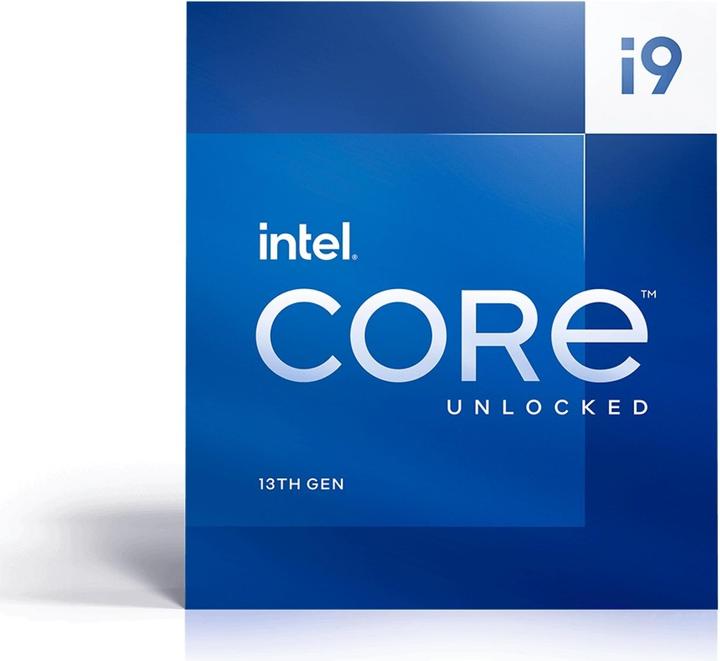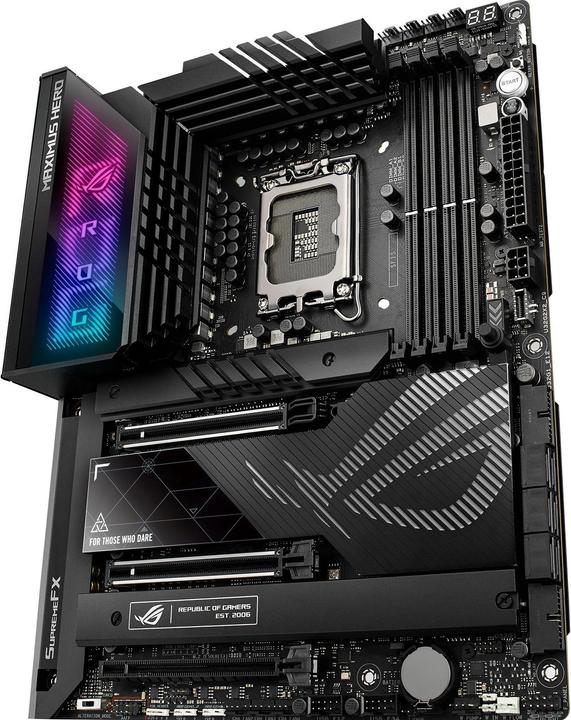

The RTX 4080 is just too expensive
Most of the discourse surrounding the Nvidia GeForce RTX 4080 concerns pricing. And deservedly so. After all, it’s the main factor in why I don’t want one.
«Is the RTX 4080 expensive or too expensive?» was the title of last week’s Review Roundup. Now that I’ve had time to get to know the 4080, the answer seems quite clear: too expensive. And that’s despite the fact that the Asus TUF Gaming GeForce RTX 4080 OC Edition I tested isn’t a bad graphics card in terms of performance.

Design and ports: a tank
The TUF features a design typical of the series. Unabbreviated, it stands for The Ultimate Force, so durability and stability. Its tank aesthetic fits with this. This card is only slightly smaller than the recently reviewed ROG Strix GeForce RTX 4090 OC. Still, the RTX 4080 is pretty darn big at 34.8 × 15 × 7.3 centimetres and won’t fit into every case. Three 104 millimetre axial fans and a huge heat sink are supposed to keep temperatures low. It features two RGB LED lighting zones: the TUF logo in the front and a bar below it. The card looks well made.
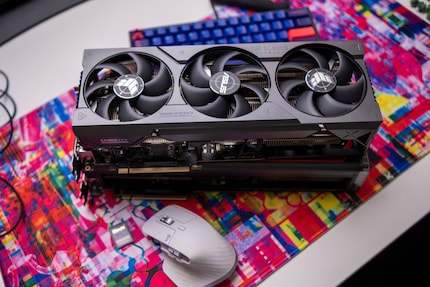
Source: Kevin Hofer
The RTX 4080 uses the PCIe 4.0 interface. It offers two HDMI 2.1a and three DisplayPort 1.4a ports. With both connection standards, up to 7680 × 4320 pixels at 60 Hz are possible. Even more would be possible with DisplayPort 2.1, which is missing on the RTX 4090. However, this might not be that desirable, since anything beyond 60 FPS would be exceedingly rare with the RTX 4080 8K. A 16-pin adapter cable and a stand are included in the scope of delivery. This way the 2-kilo card remains secure in your PC.
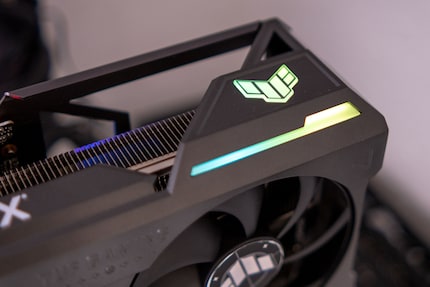
Source: Kevin Hofer
Specifications: a minor upgrade on paper
The Nvidia GeForce RTX 4080 is manufactured at TSMC in the N4 process. There are 9728 Cuda cores enabled on the AD 103 chip. In addition, the card features 304 fourth-generation tensor cores and 76 third-generation ray tracing cores. Thus, the RTX 4080 offers twelve per cent more cores than the RTX 3080. That doesn’t sound like much, but the actual performance increase compared to its predecessor is greater in reality. The card possesses 16 gigabytes of GDDR6X memory.
Nvidia still relies on PCIe Gen 4 for the interface. Powering this is a 12VHPWR adapter. You should pay attention to correctly handle the cable; otherwise there’s a risk of your card catching fire. The thermal design power (TDP) is 320 watts. Here are all the specs at a glance:
Test setup and methods
I used the following components for this review, which were provided to me by the manufacturers for testing:
The system runs on Windows 11 version 21H2 (22000.1098). I used BIOS version 0502 and enabled XMP. Otherwise, I left everything on default, Resizable BAR was disabled. For the graphics card, I used driver version 526.47.
Here’s an overview of the different benchmarks:
- Games: «Anno 1800», «Forza Horizon 5», «Assassin’s Creed: Valhalla», «Civilization VI», «Cyberpunk 2077», «Far Cry 6», «Gears of War 5», «Red Dead Redemption 2», «Shadow of the Tomb Raider»
- Games with ray tracing: «Cyberpunk 2077», «Far Cry 6», «Shadow of the Tomb Raider»
- Fire Strike/Fire Strike Ultra
- Time Spy/Time Spy Extreme
- Blender Benchmark
- Photoshop
- Premiere
- PCMark 10
I ran each benchmark three times and took the best result. For the games, I used the highest possible presets. Otherwise, I left everything at default except for the resolution. I left DLSS or FSR deactivated. In this review, I’m looking at the rasterisation and ray tracing performance of various games without additional tools.
Game results a clear increase in performance
Since we can’t display image galleries, I won’t list individual game results. You can download all the benchmarks here. The following charts (only in German) show the arithmetic mean of frames per second (FPS) for all nine benchmark games across various graphics cards.

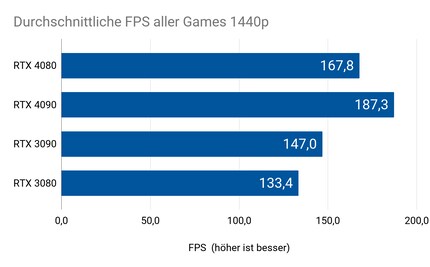

The RTX 4080 overtakes its predecessor, the RTX 3080, as well as the RTX 3090 by a wide margin. The higher the resolution, the bigger the difference. In 1080p, the RTX 4080 delivers 16 per cent more FPS than the RTX 3080, and in 1440p 26 and in 2160p 30 per cent more. Compared to the 3090, this becomes 10, 14 and 14 per cent. It appears the difference is pretty constant. The RTX 4080 is especially suitable for gaming in 2160p and 1440p. It’s too powerful for 1080p, where the CPU acts as the bottleneck.
This is a big difference compared to the RTX 4090, managing 23% fewer FPS, especially in UHD. At lower resolutions, it’s a maximum difference of ten per cent.
The card’s performance also has a minor effect on frame times in percentiles, although not as much as for average FPS. The percentile values are usually frame times measured in milliseconds. These are the time intervals from image to image, or frame to frame. The percentile values ignore statistical outliers. 99th percentile means that 99% of all data is faster than the value provided. In terms of percentiles, the RTX 4080 is 18 per cent ahead of the RTX 3080 across all resolutions. Compared to the RTX 3090, it’s 13 per cent. You can see this data in the following diagram.

Same goes for the three ray-tracing games. Across all three games, the RTX 4080 beats the 30-series cards. Compared to the RTX 3080, the difference gets bigger at higher resolutions. It increases from 27 per cent at 1080p to 34 per cent at 2160p.



Compared to the RTX 4090, it’s 12 in 1080p, 18 in 1440p and 23 per cent fewer FPS in 2160p. You can download results from individual games here.
Fire Strike, Fire Strike Ultra, Time Spy and Time Spy Ultra
Game-like scenarios are rendered in 3DMark’s synthetic game benchmarks. From this, they calculate a score that indicates theoretical in-game performance. I’ll only be giving the values for the graphics card. Differences in the overall ranking from tests are just too big. The chart shows the arithmetic mean of all four benchmarks. You can download the individual graphics here.

Across all four benchmarks, the RTX 4080 lags 17 per cent behind the RTX 4090. It blasts past the RTX 3080 and 3090 by 37 and 22 per cent, respectively.
Blender
Blender Benchmark renders three scenes in its 3D graphics suite (version 3.3) and calculates three scores using them. I’ve added these up to give end scores for each.
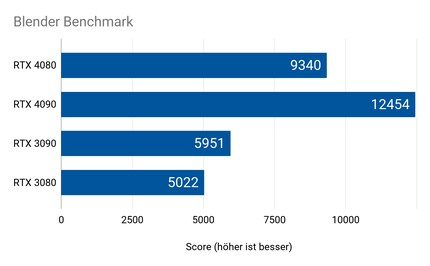
The performance jump in Blender is large. The RTX 4080 achieves an 86 per cent higher score than the RTX 3080 and a 57 per cent higher score than the RTX 3090. Compared to the current top model, the RTX 4090, however, the RTX 3080 falls 25 per cent short.
Photography and video editing
The photo editing and video editing benchmark UL Procyon simulates various workloads in Adobe Creative Suite. At the end, the benchmark calculates a score.
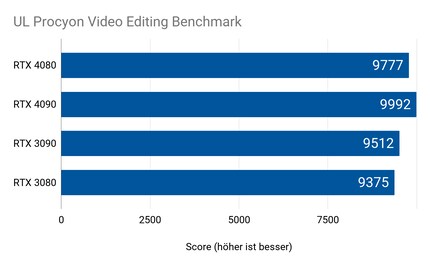

As expected, the RTX 4080 is ahead of both 30-series models in the video editing benchmark. In the photo editing benchmark, however, it falls short. That’s only slightly surprising, however. Adobe is very slow when it comes to adapting software to new hardware. If I ran the benchmark again in a month or two, I’d get a vastly different result.
Power consumption, noise and temperature
The maximum thermal design power (TDP) of 320 watts is rarely reached by the RTX 4080. In games, I’ve only seen the value flare up briefly. On average, it stays at 270 watts in 2160p across the entire benchmark suite. Thus, the RTX 4080 is quite a bit more economical than the RTX 3080 with 300 watts. At lower resolutions, the performance should be below this value. Thus, the 750-watt power supply recommended by Asus should be well sufficient.
When gaming, temperatures reached a maximum of 63 degrees Celsius. On average, I measured 56 degrees Celsius across all games on the open test bench.
The card demands more power in the Time Spy Extreme benchmark. Here, the RTX 4080 draws an average of 315 watts during the GPU tests. Nevertheless, it remains relatively cool with a maximum of 63 degrees Celsius. Even at full load with FurMark for 20 minutes, the card doesn’t get warmer than 67 degrees Celsius. The fans also remain relatively quiet with a maximum of 40 dB measured from a distance of 30 centimetres. The heat dissipation is insane. I forgot to close the game while testing over lunch. After two hours, the temperature in my 7.5 square metre office has risen from 22 to 31 degrees Celsius with the door closed.
Regarding noise, you won’t hear a peep from the card in idle mode, since the fans stand still. Like this, the card only draws 5 watts and stays cool at 28 degrees Celsius. When I’m browsing or watching Netflix, the card requires up to 32 watts of power, but doesn’t get hotter than 40 degrees Celsius. Most of the time, the fans don’t run.
Lastly, I measured performance during the Blender Benchmark. Here, the RTX 4080 draws an average of 205 watts and reaches a maximum of 54 degrees Celsius.
Verdict: nope
Performance-wise, the RTX 4080 isn’t a bad graphics card, as evidenced by all the benchmarks in this review. It delivers decent FPS while remaining efficient. Still, the price is a problem.
The Founders Edition RTX 4080 costs 1,199 USD at launch in the US. That’s $500 or 72 per cent more than the RTX 3080 at its launch in 2020. The same goes for the Asus TUF Gaming GeForce RTX 4080 OC Edition featured in this review. It cost 1,659 francs/euros at launch. Its direct predecessor, the ASUS GeForce TUF RTX 3080 O10G Gaming, ran you just 739 francs/euro. The new card is 125 per cent more expensive than its 2020 equivalent.
Does it also offer 125 per cent more power? Nope. In games, it delivers a maximum of 34 per cent more frames per second. In Rasterizer games – i.e. without ray tracing – one FPS in 2160p costs 8.70 francs/euros for the RTX 3080 at launch, and 15.05 francs/euro for the RTX 4080. Admittedly, the latter is more efficient. I also didn’t test features such as the DLSS 3.0 upscaling technology. With this, the differences in frame rates should be higher. Nvidia didn’t offer this feature in its previous series. Regardless, 125 per cent is too steep a surcharge.
The pricing policy makes it seem like we’re still in the middle of a semiconductor crisis, with scarcely available graphics cards. But that’s no longer the case. Today, inflation is a bigger problem. But even it, to my knowledge, isn’t at 125 per cent…
The card is positioned artificially high in Nvidia’s lineup. Performance-wise, it’s far from an RTX 4090 with up to 23 per cent fewer FPS in Rasterizer games. Differences in performance with the flagship only went up to 14 per cent for the predecessor. However, in terms of price, the RTX 4080 is closer to the RTX 4090 than the equivalent predecessor series at release. This difference came down to 114 per cent for the RTX-30 series and only 33 per cent for the RTX-40 series.
This is probably why our store still has various RTX 4080 cards in stock – something that was unimaginable two years ago in the midst of the crisis. The tested model is already over 100 francs cheaper (as of: 2 December 2022) than at launch. Nvidia can only afford to charge an outrageous amount for the top model RTX 4090 – because there’s simply nothing better. This isn’t the case with the RTX 4080, especially since AMD will soon launch new cards as well. The Asus TUF Gaming GeForce RTX 4080 OC is just too expensive.
From big data to big brother, Cyborgs to Sci-Fi. All aspects of technology and society fascinate me.
